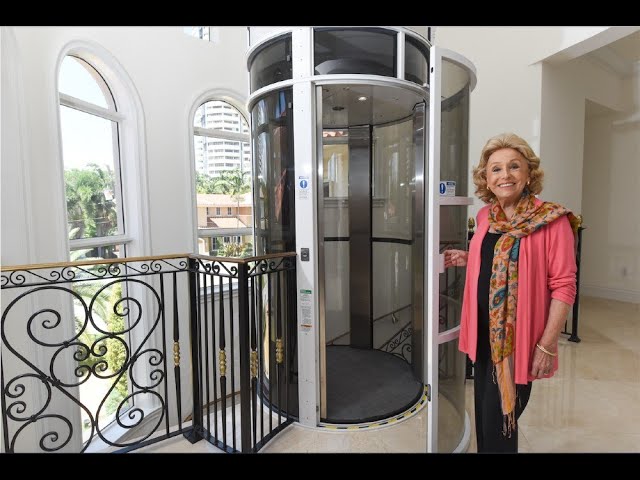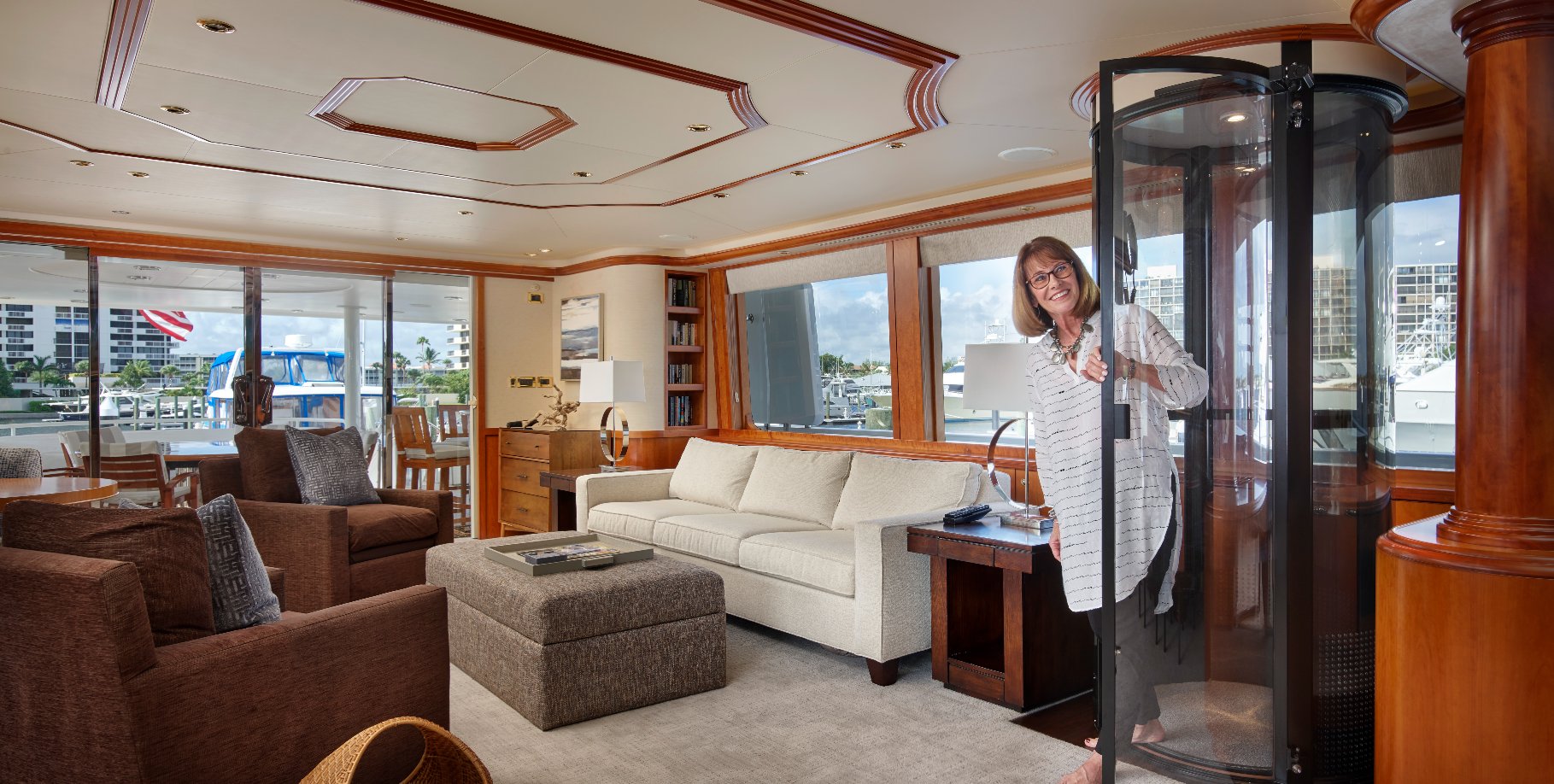Residential elevator lifts have improved modern living, providing unparalleled convenience and accessibility within homes. These innovative devices, designed to transport people and goods between different floors, offer a myriad of benefits that enhance both comfort and functionality.
The Evolution of Home Mobility Solutions
In recent years, the demand for residential elevator lifts has surged as homeowners increasingly focus on accessibility. Gone are the days when elevator word came with commercial buildings or luxury estates. Today, they have become main components of residential properties, catering to diverse needs and lifestyles.
Meeting the Needs of Diverse Demographics

One of the primary driving forces behind the popularity of residential elevator lifts is their ability to cater to the needs of diverse demographics. From elderly individuals seeking to age in place to homeowners with mobility challenges, these lifts offer a practical solution for overcoming architectural barriers and promoting independent living.
Enhancing Home Aesthetics and Value
Beyond their functional benefits, residential elevator lifts can also enhance the aesthetics and value of a home. With sleek designs and unique editable features, these lifts immediately integrate into various architectural styles, matching with the overall interior design. Furthermore, they serve as a testament to the homeowner’s commitment to advancement and convenience, thereby boosting the property’s resale value.
Overcoming Space Constraints
One common misconception about residential elevator lifts is that they require significant space, making them impractical for smaller homes. However, advancements in design and technology have led to the development of compact elevator models. They specifically fit within limited spaces. Whether installed in a corner of the house or integrated into existing staircases, these space-saving solutions ensure that homeowners can enjoy the benefits of vertical mobility without compromising on living space.
Safety and Reliability Features
Safety is paramount when it comes to residential elevator lifts, and manufacturers have implemented various features to ensure the well-being of users. From emergency braking systems to door sensors and backup power sources, these lifts have multiple layers of protection to prevent accidents and ensure smooth operation. Additionally, regular maintenance and inspections further enhance their reliability, providing homeowners with peace of mind.
Environmental Considerations
In an era where sustainability is a key concern, residential elevator lifts have also evolved to address environmental considerations. Many modern models incorporate energy-efficient components and technologies, reducing their carbon footprint while maximizing operational efficiency. Furthermore, the use of eco-friendly materials in construction ensures that these lifts align with green building standards, making them an environmentally conscious choice for home owners.
Financial Investment and Long-Term Savings
While the initial cost of installing a residential elevator lift may seem daunting, it is essential to consider the long-term savings and benefits that these devices offer. By eliminating the need for costly home renovations to accommodate mobility limitations, elevator lifts can significantly reduce expenses associated with aging in place. Moreover, the added convenience and accessibility they provide can enhance the quality of life for residents, making them a worthwhile investment in the long run.
Embracing Innovation for Modern Living
In summary, home elevator lifts are a big improvement in how we move around our houses, making it easier, safer, and more accessible. They help us overcome obstacles like stairs, add value to our homes, and even help the environment. By keeping up with new elevator technology, homeowners can make their homes more convenient and ready for the future.
The Role of Technology in Elevator Design
Advancements in technology have played a pivotal role in shaping the design and functionality of residential elevator lifts. From sophisticated control systems to intuitive user interfaces, these technological innovations have transformed elevators into seamless and user-friendly devices. Features such as remote operation, smartphone integration, and voice-activated controls have made elevator usage more convenient and accessible than ever before.
Customization Options for Personalized Experiences
One of the key advantages of residential elevator lifts is their versatility and customization options, allowing homeowners to tailor the elevator experience to their specific preferences and requirements. From choosing the perfect color scheme and materials to selecting cabin sizes and interior finishes, the customization possibilities are virtually endless. This level of personalization ensures that each elevator installation is unique and reflects the homeowner’s individual style and personality.
Addressing Accessibility Challenges in Multilevel Homes
For individuals with mobility challenges or disabilities, navigating a multilevel home can be a daunting task. Residential elevator lifts provide a practical solution to this problem by offering seamless vertical transportation between floors. Whether installed as a retrofit in an existing home or incorporated into the initial design of a new construction, these lifts promote inclusivity and independence for residents of all abilities.
Future Trends and Innovations in Elevator Technology
Looking ahead, the future of residential elevator lifts has exciting possibilities as manufacturers continue to push the boundaries of innovation. From advancements in energy efficiency and sustainability to the integration of artificial intelligence and smart home technology, the next generation of elevator lifts promises to redefine the way we think about vertical transportation. With ongoing research and development efforts, we can expect to see even more sophisticated and feature-rich elevator solutions in the years to come.
Conclusion: Elevating the Standard of Home Living
In conclusion, residential elevator lifts have emerged as indispensable assets for modern homeowners, offering a perfect blend of convenience, accessibility, and style. As the demand for these innovative devices continues to rise, so too will the opportunities for further advancements and improvements in elevator technology. By embracing the transformative power of residential elevator lifts, homeowners can elevate not only their physical mobility but also their overall quality of life. With an eye toward the future, we can expect to see even greater integration of elevator technology into the fabric of everyday home living, enhancing comfort, convenience, and accessibility for generations to come.
Frequently Asked Questions (FAQs) About Home Elevator Systems
1. Are home elevator systems suitable for all types of residences?
Home elevator systems come in various sizes and configurations, making them suitable for a wide range of home layouts and architectural styles. Whether you live in a single-family house, townhouse, or condominium, there are elevator system options available to accommodate your specific needs and space constraints.
2. What is the typical cost associated with installing a residential elevator system?
The cost of installing a home elevator system can vary depending on several factors, including the type of lift, the size of the elevator shaft, customization options, and installation requirements. On average, homeowners can expect to invest anywhere from $20,000 to $50,000 for a standard home elevator system installation. However, it’s essential to consult with a professional elevator installer to get an accurate quote based on your specific circumstances.
3. Are home elevator systems safe to use?
Yes, home elevator systems are designed with safety as a top priority. They come equipped with various safety features, including emergency braking systems, door sensors, backup power sources, and automatic shutoff mechanisms to prevent accidents and ensure smooth operation. Additionally, regular maintenance and inspections are recommended to keep the elevator system in optimal condition and further enhance its safety.
4. Can home elevator systems be customized to match my home’s interior design?
Absolutely! One of the key advantages of home elevator systems is their customization options, allowing homeowners to tailor the elevator’s design to complement their home’s interior aesthetic. From choosing the perfect color scheme and materials to selecting cabin sizes and interior finishes, there are numerous customization possibilities available to create a cohesive and stylish look that seamlessly integrates with your home decor.
5. Do home elevator systems require a lot of maintenance?
While home elevator systems do require regular maintenance to ensure optimal performance and safety, the level of maintenance needed is typically minimal compared to commercial elevators. Most manufacturers recommend scheduling annual inspections and maintenance checks by qualified professionals to identify any potential issues and address them promptly. By following the manufacturer’s maintenance guidelines and scheduling routine inspections, homeowners can enjoy years of trouble-free operation from their home elevator system.
6. Can home elevator systems be installed in existing homes?
Yes, home elevator systems can be installed in existing homes as retrofits, although the feasibility of installation may vary depending on the home’s layout and structural considerations. In many cases, elevator installation professionals can customize the elevator shaft to fit within the existing space available, minimizing the need for extensive renovations. However, it’s essential to consult with a qualified elevator installer to assess your home’s suitability for elevator system installation and determine the best course of action.
7. Are home elevator systems energy-efficient?
Many modern home elevator systems are designed with energy efficiency in mind, incorporating features such as energy-saving LED lighting, regenerative drive systems, and efficient motor technology to minimize power consumption. By utilizing these energy-efficient components and technologies, home elevator systems can help homeowners reduce their carbon footprint and energy costs while still providing reliable vertical transportation within the home.








